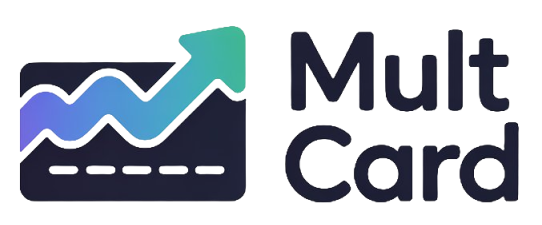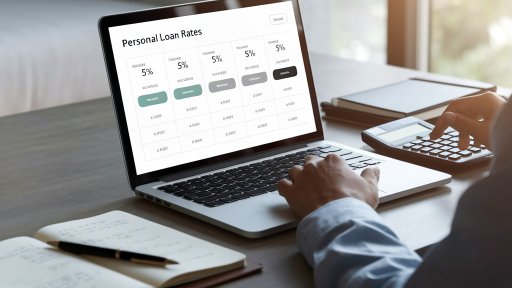Navigating the world of personal finance can feel overwhelming, but a personal loan can be a powerful and flexible tool when you need access to funds. Whether you’re looking to consolidate high-interest debt, finance a major home renovation, or cover an unexpected medical bill, understanding the application process is the first step toward making a smart financial decision.
This guide is designed to demystify the entire journey. We’ll walk you through everything from preparing your finances and gathering documents to the critical steps of comparing offers and securing the best possible rates. By the end, you’ll have the confidence and knowledge to find a loan that fits your needs without falling into common traps.
What Exactly is a Personal Loan?
At its core, a personal loan is a type of installment loan where you borrow a lump sum of money from a lender (like a bank, credit union, or online company) and pay it back in fixed monthly payments over a set period. Unlike a mortgage or auto loan, which are secured by property, most personal loans are unsecured, meaning you don’t have to put up collateral like your house or car.
Key Characteristics of Personal Loans
- Unsecured Nature: Because there’s no collateral, the lender’s decision is based primarily on your creditworthiness. This makes them accessible but also means interest rates are heavily tied to your financial profile.
- Fixed Interest Rates: The vast majority of personal loans come with a fixed interest rate. This is great for budgeting because your monthly payment remains the same for the entire life of the loan.
- Defined Repayment Term: You’ll know exactly when your loan will be paid off. Terms typically range from two to seven years, allowing you to choose a payment schedule that works for you.
- Versatile Use: The funds can be used for almost any legitimate purpose, providing significant flexibility.
Common Reasons to Get a Personal Loan
People use personal loans for a wide variety of reasons. Some of the most common scenarios include:
- Debt Consolidation: Combining multiple high-interest credit card debts into a single loan with a lower interest rate can save money and simplify payments.
- Home Improvements: Funding a kitchen remodel, a new roof, or a bathroom update without tapping into home equity.
- Major Life Events: Covering the costs of a wedding, a big move, or other significant personal expenses.
- Medical Bills: Paying for unexpected medical or dental procedures that aren’t fully covered by insurance.
- Emergency Expenses: Handling a sudden car repair or an urgent home appliance replacement.
Before You Apply: Getting Your Financial House in Order
Preparation is the most critical phase of the loan application process. Taking these steps beforehand will significantly increase your chances of approval and help you qualify for the most favorable terms available.
Step 1: Check Your Credit Score
Your credit score is the single most important factor lenders consider. It’s a numerical representation of your credit risk, and it directly influences the interest rate you’ll be offered. A higher score signals to lenders that you are a reliable borrower, resulting in lower rates. Before you even think about applying, you should check your credit reports for free from all three major bureaus (Equifax, Experian, and TransUnion) to check for errors and see where you stand.
Step 2: Determine How Much You Need to Borrow
It can be tempting to borrow a little extra “just in case,” but this is a mistake. Only borrow what you absolutely need. Create a detailed budget for your project or expense to arrive at a precise number. Remember, every dollar you borrow is a dollar you have to pay back with interest. A clear budget also demonstrates financial responsibility to potential lenders.
Step 3: Gather Necessary Documentation
Lenders need to verify your identity, income, and financial stability. Having your documents ready will streamline the application process. You’ll typically need:
- Proof of Identity: A government-issued ID like a driver’s license or passport.
- Proof of Income: Recent pay stubs, W-2s, or tax returns if you’re self-employed.
- Proof of Address: A recent utility bill or bank statement with your name and address.
- Bank Statements: To show your cash flow and financial habits.
The Step-by-Step Guide to Applying for a Personal Loan
With your preparation complete, you’re ready to start the application process. Following these steps methodically will help you compare offers effectively and choose the best loan for your situation.
1. The Pre-Qualification Stage: Shopping Without Impacting Your Credit
This is where you can “window shop” for loans. Pre-qualification involves providing basic financial information to a lender, who then performs a soft credit check. This type of inquiry does not affect your credit score. In return, the lender gives you a preliminary offer, including a potential loan amount, interest rate, and term. It’s crucial to get pre-qualified with multiple lenders—including your local bank, credit unions, and several online lenders—to see a wide range of potential offers.
2. Comparing Your Loan Offers: Look Beyond the Interest Rate
Once you have a few pre-qualification offers, it’s time to compare them. The interest rate is important, but the Annual Percentage Rate (APR) is the true cost of borrowing. The APR includes the interest rate plus any mandatory fees, such as origination fees. A loan with a slightly lower interest rate but a high origination fee might be more expensive overall than a loan with a slightly higher interest rate but no fees. You can learn more about what APR includes to make an informed decision.
Here’s a sample comparison table to help you organize the offers:
| Lender | Interest Rate | APR | Origination Fee | Monthly Payment |
|---|---|---|---|---|
| Online Lender A | 7.99% | 8.55% | 1% | $313 |
| Local Credit Union | 8.25% | 8.25% | 0% | $314 |
| Big Bank B | 8.50% | 9.15% | 1.5% | $316 |
*Note: These are hypothetical figures for a $15,000 loan over 5 years.
3. Submitting the Formal Application
After choosing the best offer, you will proceed with a formal application. This step will require you to submit your gathered documents for verification and authorize a hard credit inquiry, which will temporarily lower your credit score by a few points. The lender will then conduct a thorough underwriting process to finalize the loan terms.
4. Approval and Funding
If your application is approved, the lender will send you a final loan agreement to sign. Read this document carefully! Once you sign, the funds are typically deposited directly into your bank account within one to five business days.
How to Compare and Secure the Best Personal Loan Rates
Getting the best rate is about more than just having a great credit score. Understanding all the factors at play can help you position yourself as an ideal candidate.
Factors That Influence Your Interest Rate
- Credit Score: The most significant factor. Scores above 740 typically receive the best rates.
- Debt-to-Income (DTI) Ratio: This is your total monthly debt payments divided by your gross monthly income. Lenders prefer a DTI below 36%. Understanding how to go about calculating your DTI is a vital step in financial planning.
- Loan Term: Shorter loan terms usually have lower interest rates but higher monthly payments. Longer terms have lower payments but you’ll pay more in total interest over the life of the loan.
- Employment History: A stable employment history and consistent income demonstrate to lenders that you have the means to repay the loan.
Where to Find the Best Personal Loans
Different types of lenders have different strengths. It’s wise to check all three categories:
- Traditional Banks: Pros: You may get preferential rates if you have an existing relationship. Cons: They often have stricter credit requirements and a slower application process.
- Credit Unions: Pros: As non-profit institutions, they often offer lower interest rates and fees. Cons: You must meet membership requirements to join, though many have broad eligibility. You can often find a credit union in your area with relative ease.
- Online Lenders: Pros: They typically offer a fast, convenient online process with competitive rates for a wide range of credit scores. Cons: The service can be less personal, and you must be comfortable managing your finances digitally.
Common Pitfalls to Avoid When Applying for a Loan
Being aware of common mistakes can save you time, money, and stress.
- Applying for Only One Loan: Without comparing offers, you’ll never know if you’re getting the best deal.
- Ignoring the Fine Print: Always check for prepayment penalties (fees for paying the loan off early) and the structure of late fees.
- Multiple Hard Inquiries: Submit all your formal applications within a 14-day window. Credit scoring models often treat multiple inquiries for the same type of loan in a short period as a single event, minimizing the impact on your score.
- Borrowing More Than You Can Afford: A personal loan should solve a financial problem, not create a new one. Ensure the monthly payment fits comfortably within your budget.
Ultimately, a personal loan is a significant financial commitment. By doing your homework, preparing your finances, and carefully comparing your options, you can use it as a strategic tool to achieve your goals. Being a well-informed borrower is your greatest asset in this process.
For more comprehensive information and consumer protection resources, a detailed personal loan guide from the Consumer Financial Protection Bureau can provide further official clarification on your rights and what to look for in a lender.






